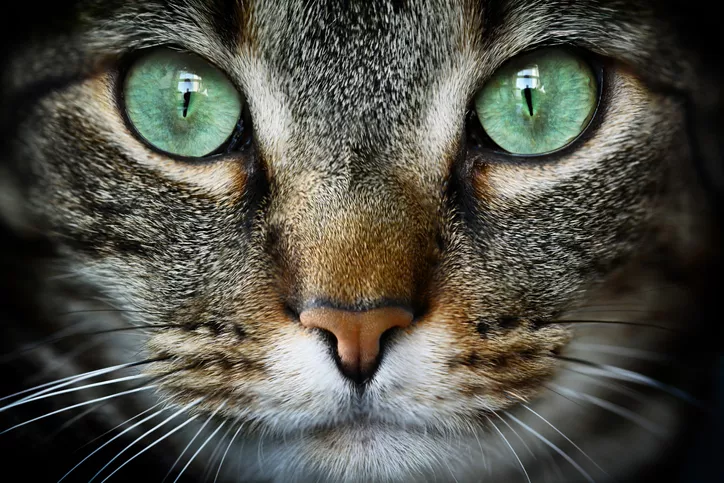Can Cats See in the Dark?

Veterinarians and scientists don't fully understand everything about cats, and how well they see is still one of those mysteries. Cats have been domestic pets for nearly 12,000 years, and we are still actively learning about them.
There are many myths about how well cats see, including that they can see in the dark and that their vision is better than ours. These oft-repeated ideas can make cats seem like supernatural beings.
In reality, cats can't see in total darkness, but they possess improved vision in darker settings thanks to their eyes' anatomy.
Can Cats See in the Dark?
You may have heard they can, but this is only partially true. Cats don't have true “night vision” and, like us, cannot see in the complete absence of light.
However, cats are definitely able to see better in low-light environments than humans are. It can come in handy when they're stalking prey in the early morning or late evening hours. These times of the day are important for outdoor cats. They're hunting for food when many small prey animals are most active.
Many cat owners are confident their cat can, in fact, see in the dark. They get this impression because cats see well in low or little light. However, modern homes are rarely completely dark, and the light from street lamps, clocks, and other appliances allows just enough light for a cat to see.
How Does Cats' Low-Light Vision Work?
Cats' vision involves their unique anatomy. Their eyes are large in proportion to their body size. Also, their vertical pupils can dilate to a much larger extent than a human pupil. These features allow in as much light as possible.
Moving down to the cellular level, the cat’s eye contains a much higher percentage of rods compared to a human eye. Rods are one of two types of light-sensitive cells in the retina at the back of the eye, and they turn the incoming light into electrical signals that are then transmitted to the brain. Rods primarily detect light and shadows, making them especially important in dim light. Cones, the other light-detecting cell, are primarily involved in color vision and spacial acuity.
Finally, cats have a reflective tapetum in the back of their eyes. This area, known as the tapetum lucidum, is responsible for the eerie greenish-yellow glow of cats’ eyes when caught in lights. This layer of the eye reflects light onto the retina and allows more light to hit more of the rods.
How Does My Cat’s Vision Compare With Mine?
Pet parents are often curious how cats' vision compares to ours. Cats can see much better in low light than we can due because of their eyes' anatomy, but what about clarity and color?
In visual acuity, we excel over our cats. They don't see the world as clearly as we do. Typically, humans have more cones in their retinas than cats, allowing us to see sharper images and better spacial visualization.
We also boast better color vision than our cats. We believe, based on the types of cones in their eyes, cats don't see colors exactly the way humans do. Though we don't now everything about how cats perceive color, they likely see a more muted spectrum.